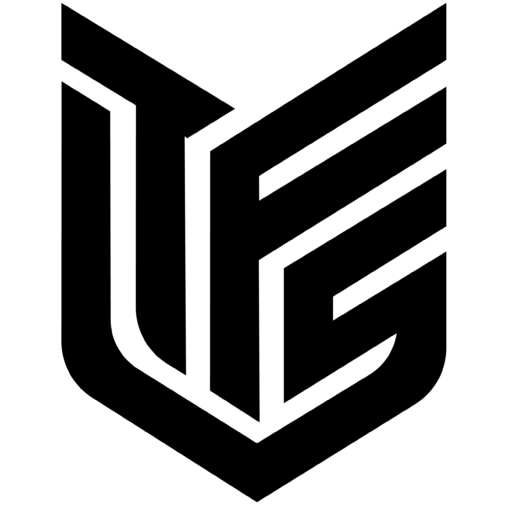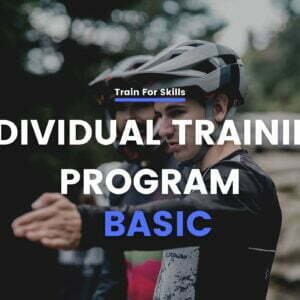Training Periodization Part II – Anatomical Adaptation
The preparatory period is the first of 3 main periods (training phases) in an athlete’s annual training plan. In addition to the Preparatory Phase, there is also a Competitive Phase and a Transition Phase. The division of the annual plan into periods is called periodization, and it is a procedure designed to better manage the training and the process of physical adaptation. Today I will explain what anatomical adaptation is.
In this text we will focus on the preparation phase. Whereas you can find more about periodization in the previous article – training periodization.

The goal is to keep the goal the goal
As athletes or coaches we should focus our attention on what physiological adaptation leads to increased athletic performance, rather than thinking about what specific exercises we should perform. When we answer the question of what the sport requires of us and what must change in the structure and function of our body to play better or go faster, it will be easier to choose the right training tools.
We often fall into the trap of inventing new “specialized” exercises and forget about the goal, which is the most important one. Therefore, the first and primary task is to stick to the goal. Download a sample workout from the Anatomical Adaptation phase.
Preparatory period – anatomical adaptation
The preparation period is the time when we acquire and improve our overall ability to work and exercise. It consists of 2 basic sub-phases:
- General Preparation
- Special preparation

While the length of the preparation period and the competition period is relatively similar among athletes of the same discipline, the duration of the individual subphases may vary depending on:
- Age – the younger the athlete, the more they will benefit from a relatively longer preparation phase. With children it is difficult to talk about specific training phases. The development in the young years should be based on the formation of the general motoricity, and skills should be acquired during games and sports. During this time we can use sensitization periods for the development of individual motor skills. The older athlete with more experience the preparatory phase is relatively shorter and adequate to the phase of competition.
- Sports discipline – each sports discipline is characterized by a different number of starts / competitions and their distribution during the year. In the case of individual sports when in season we have 5-10 starts within 5-6 months, then we will talk about the phase of competition, and the preparatory phase will be adequate length of 5-6 months. In team sports they may be shorter, but there will be several of them.
- Training experience – the more trained and experienced athlete is, the less time he should spend on general preparation. Special preparation and the use of specific training methods will give him the greatest benefit in terms of improving his athletic ability. Children and adolescents usually need 8-10 weeks of anatomical adaptation phase while older and experienced athletes only need 2-4 weeks.
- Injuries – unscheduled breaks from training such as injury or illness can also affect the length of the overall preparation phase in order to restore strength, mobility and work capacity
The preparation phase usually focuses on the following goals:
- acquisition and refinement of general trainability
- development of basic (general/low specificity) motor skills
- strengthening connective tissue, tendons and ligaments
- improving muscular endurance
- increase in general strength level
- development of aerobic capacity
- shaping the appropriate mental abilities
- developing and improving technique
- improving work capacity
- progressive increase of the load and introduction of specific training methods the closer to the competition phase
Endurance training during the preparation period
The type of endurance training during the preparation period is very much related to the energy requirements of the target sport. However, in most cases this period is dedicated to the shaping of aerobic capacity or the so-called aerobic base. The aerobic metabolic system is the basic energy system responsible for almost all daily activities. Additionally, any effort regardless of intensity lasting over 1 minute is characterized by the dominance of the aerobic system. For this reason, most endurance sports will use mainly this system in their training.
The following illustration is just an example of the sequential periodization of endurance training.

Training the aerobic system, among other things:
- increases the minute volume of the lungs at intense efforts
- Slows down the resting heart rate
- decreases arterial pressure at rest
- increases the stroke volume of the heart (amount of blood pumped with oxygen to tissues)
- stimulates synthesis of aerobic enzymes (better use of oxygen by muscles in trained people)
- increases oxidation of fatty acids
- increases angiogenesis (formation of capillaries and easier access of oxygen and energy substrates to cells)
- shifts the ventilation threshold towards higher loads (colloquially speaking it means that we can run faster without signs of fatigue)
Depending on the length of the preparation period and the sport in question, we can use continuous training, Fartlek training or interval training. The parameters of each of these are precisely set by the trainer based on the individual’s needs.
Strength training during the preparatory period – anatomical adaptation
If you read the last post about training periodization then you know that periodization also concerns motor skills such as strength, speed and endurance. Therefore, strength training should also be arranged in a well-thought-out way according to physiological adaptations of our body.

See our database of 1500 exercises in the TFS Atlas.
The table above shows the periodization of strength training in 7 phases. Although they are clearly separated in the illustration, in practice the transition from one phase to the next does not look so brutal. It is a gradual transformation of training parameters and a smooth transition to the next phase.
Anatomical adaptation
The main purpose of the anatomical adaptation phase is to prepare the athlete’s body for higher loads and ensure its safety in the following phases. It used to be popular to start the annual plan from the hypertrophy phase. Such an approach makes sense in silhouette sports. However, in many sports such as soccer, basketball, cycling, swimming additional muscle mass is not always desired.
Anatomical adaptation aims to prepare the athlete for the effort and training in the following phases by:
- strengthening joints, tendons and ligaments
- restoring the correct (needed) range of motion in the joints
- improving muscle flexibility
- engaging as many muscle groups as possible throughout the body (legs, arms, back, abdomen, and the whole body)
- balancing the strength of extensors to flexors (agonist-antagonist ratio), right and left sides of the body, especially legs and arms
- strengthening joint stabilizers
However, a complete balance between agonist and antagonist is not always possible. This is because some muscles are longer or stronger than others. For example, the muscle that straightens the knee (quadriceps of the thigh) is stronger than the muscle that flexes it (biceps of the thigh). The same is true for the ankle flexor (gastrocnemius – stronger) and extensor (tibialis anterior – weaker). Below you will find a table that shows the approximate ratio of agonist to antagonist forces.

The above table should only be used as a general guideline for coaches and athletes to maintain proper strength balance. Movement patterns are very helpful in selecting appropriate exercises and in maintaining a balance of muscle function.
Training Methods and Forms in Anatomical Adaptation
Knowing the principles and goals of training in the anatomical adaptation phase, we are able to choose the appropriate training methods and forms. The most commonly used forms are circuit training, super-sets and classic form.
- Circuit training
One of the most popular forms of training, well known by endurance athletes and others. The circuit training method was first proposed by Morgan and Adamson in 1959. The initial scheme consisted of several stations/exercises with variable muscle work and was repeated several times. Over time, this form was often modified.
Circuit training is characterized by:
- a set of 6-12 exercises that meet the needs of the athlete and are appropriate for a given phase
- a range of repetitions from a large number (e.g. 20) and with the duration of the cycle to a smaller number of repetitions (e.g. 8)
- number of rounds/circuits from 2 to 4
- breaks between exercises from 20 to 90 seconds
- rest between rounds (circuits) from 1 to 3 minutes
- medium or sub-maximum intensity of exercises, i.e., without muscle breakdown and with a reserve of 1-2 repetitions in a series
- possibility of using free weights, medicine balls, exercise bands, machines, and your own body weight
*coach determines which exercises are best and prescribes exact parameters for each of them
- Super Series
The super series method involves combining 2-3 exercises performed consecutively into one series (mini circuits).
Example 1:
A1 Inverted Row
A2 Push Ups
Example 2:
A1 Squat
A2 RDL
A3 Farmer Walk
- Classic (Horizontal) Form
The classic form of training involves performing exercises one at a time. Only after completing all series of exercise 1 we move on to the next one. This form is suitable for beginners who need to focus their attention on one task and perform it technically correctly, as well as advanced trainees who need more stimulation. The horizontal form of training works well in all phases of training. However, the length of rest periods and intensity will depend on the ability being trained. For example in maximal strength training we will perform Back Squat 5×3 @85%1RM with 2-3 minutes break, while in hypertrophy training Back Squat 3×12 70%1RM with 45-90 seconds break.
Above I presented 3 simple training forms. In complete preparation we use many more of them. So are the training methods, i.e. specific ways of performing a given exercise. However this is highly individual and a topic for another article 🙂
If you need a tool that will help and accelerate the planning of your training see our TFS Atlas of Exercises.
To sum up
Remember that the length of the phase as well as the chosen forms and training methods should be selected individually to the person and adequately to the sport discipline practiced. Learning the basic principles of physiological adaptations of our body should precede the prescription of specific exercises. In turn, exercises and work in the preparatory period should be aimed at general motor development, tissue strengthening and equalization of strength disproportions.
References:
- T. Bompa, C. Buzzichelli (2015), Periodization Training For Sports, Human Kinetics, pp. 80-232
- D. Joyce, D. Lewindon (2014), High-Performance Training For Sports
- J. Górski (2019), Physiology of effort and physical training, PZWL, Warsaw




